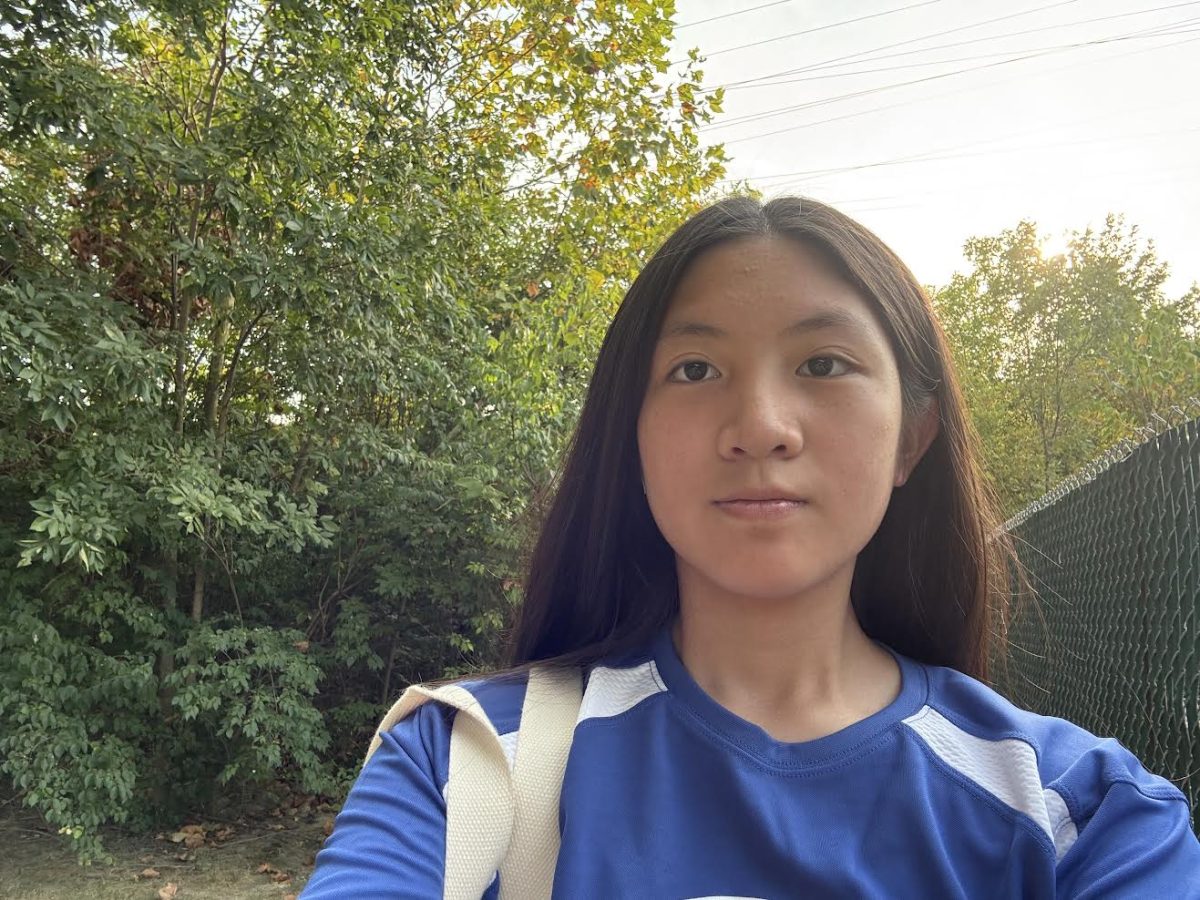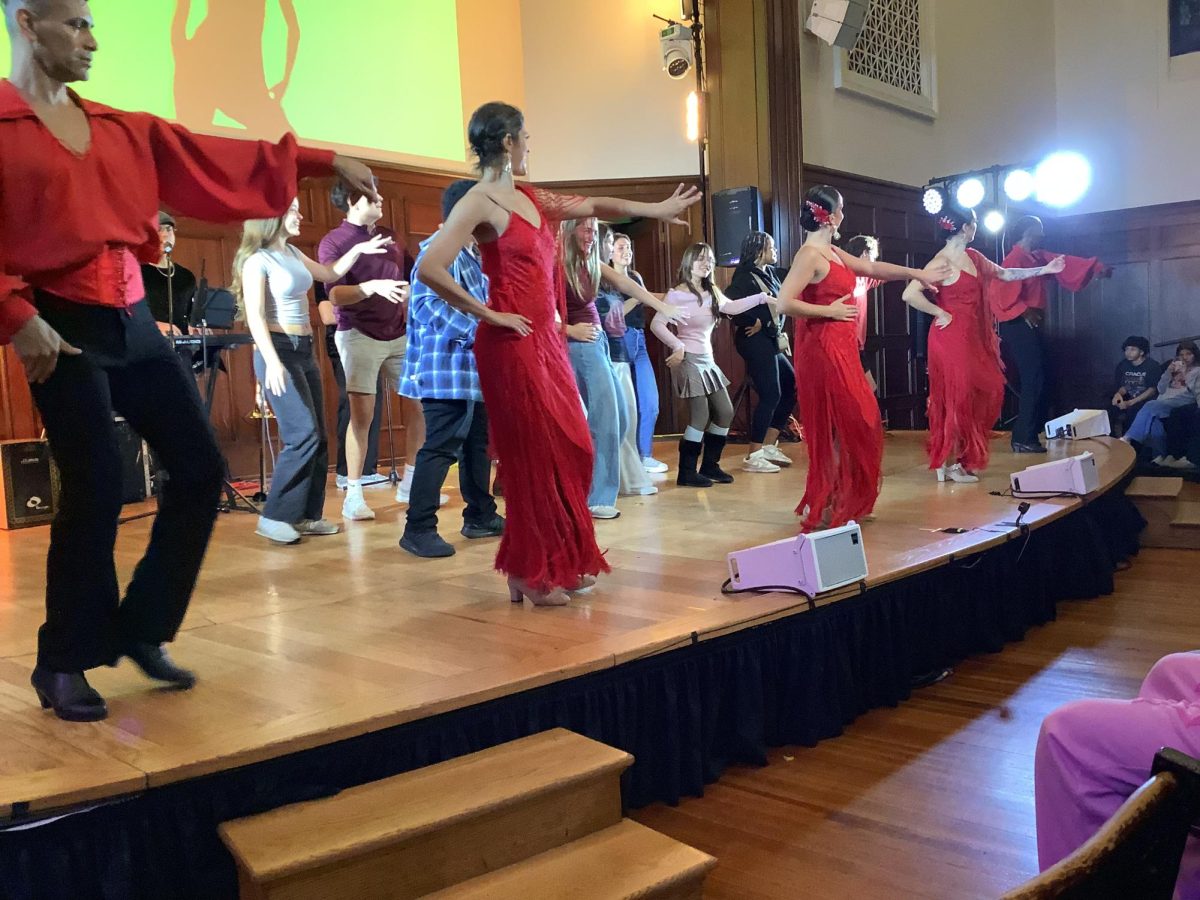Seasonal Affective Disorder
November 4, 2015
Colder weather has some people feeling SAD.
Seasonal Affective Disorder (known more commonly by its acronym) is fairly common, though less frequently discussed than some other similar disorders. It is categorized mainly by depressive episodes at specific times in the year, usually relating to the season or weather. Some are most affected by this in the summer, while it is more common to feel depressed in the winter. “The main symptoms are going to be what you would normally think for a person who would have severe clinical depression, but usually not as severe, and not as long,” Mr. Aiello explained, adding that, “What makes S.A.D. a little bit different [than depression] is that it mainly happens during the winter season… The theory and the research suggest it’s strongly based upon the amount of sunlight that we receive.” As the days grow shorter, and the year begins to end, those with SAD are likely to start feeling it.
“When people don’t get very much natural light… it causes the brain to not produce as much of melatonin and serotonin, [which are] the key neurotransmitters that play in role in our mood and our energy levels.” Because of this, Aiello says, therapy and treatment for S.A.D. tends to actually be fairly simple: light therapy. During this, patients sit in front of bright lights for a certain amount of hours a day, “tricking the brain into producing larger quantities of the neurotransmitters that slightly elevate their mood.”
When questioned about the prevalence of this disorder at CHS, and outside of school, Aiello answered that one of the biggest problems regarding the treatment and research of Seasonal Affective Disorder is the large amount of people who self-diagnose. “There are a lot of misconceptions and there’s a lot of information on the Internet that’s not always the most accurate and reliable. So, a lot of people probably self-diagnose because they’ve heard a little bit about it, they do just a little, tiny bit of research, and they’re like, ‘Oh, gosh, I have a couple of those symptoms. It must mean that I actually have this disorder.’ And the fear that people in the mental health field have is that, with more and more people doing that… it’s giving a false sense of how many people actually have this disorder.” He then added that the percentage of people actually diagnosed (by professionals) is likely very low, while a form of ‘seasonal depression’ is probably much higher.
The difference between the more common stress and sadness in winter and a mood disorder such as S.A.D. is, as is the case with all disorders, how much it prevents one from functioning in day to day life, and the magnitude to which it affects one’s happiness and mental state.
Aiello elaborated, “All of us go through periods of ups and downs where we get tired, and don’t want to do the same sort of things that we always have to do, and all the daily deadlines, and stuff like that. But a mood disorder is characterized by even loss of interest in the things that you would normally enjoy doing. So being with friends….If you like to exercise, you lose interest in that. If you like video games, you lose interest in that…”
Furthermore, Aiello believes that, while it can be helpful for teachers to be aware of students’ mental health and specific needs, this kind of communication and sharing of information is not always necessary. However, the impact on schoolwork and performance can range anywhere from little to no change, to an incredibly damaging one. For some, the sudden drop in mood makes it difficult to focus, and pay attention, and the decrease in motivation leaves students with an inability to complete their homework and perform on tests, or even to get out of bed in the morning. In these situations, Aiello argues that communication between the student and teacher is absolutely essential, not only to create an understanding between the two, but so that the teacher can help meet the student’s specific needs.
One of the most important things to remember is that, of course, there is nothing wrong with asking for help. The first thing to do, Aiello advises, is talk to someone you trust, and who can help you. Seeking further help from a counselor, doctor, therapist, or any similar profession should be the next step: “If it’s gotten to be bad enough that it’s interfering with your normal daily function, it’s probably not something you can solve on your own..”
As for those who find themselves close to someone suffering from this disorder, Mr. Aiello says, “Probably the biggest thing is to let them know you care….Asking somebody if they’re having problems is not going to cause them to start having problems. The biggest thing not to do….is to realize it is not your responsibility to ‘fix’ your friend. It’s your responsibility to help them realize that there are people who care about them… We all have so many things that we’re dealing with, that taking on somebody else’s problems can only make it worse for yourself…” That being said, it’s also very important to recognize that winter will end eventually, and Seasonal Affective Disorder will never last all year.
Yet there are multiple battles to be won, figuratively speaking, one of which is regarding the stigma surrounding mental illness. Another is the availability of help. Aiello reflected, “One of my dreams, as the psychology teacher here…is that somewhere in my lifetime… our society will start thinking of mental health the same way that we think of physical health… Where we see nothing wrong with a student or a person going to their doctor for a physical issue, and getting diagnosis and treatment, and a plan to get better. [So we should] also think that way about mental health. We’re not there yet…the attitude towards mental health [at CHS] is probably a little healthier… And if you have the resources, that’s awesome. I just think that we should make it so that more people could have access to that kind of care.”





!["[Practicing is the best thing you can do.] Right now I'm trying out for the mock trial team. Last year, I practiced my mock trial skills, and now I'm gonna be able to use them because I practiced them. [It also helps because] I play violin. [This applies to] Everywhere. Music, school, everything." -Emilio Lowder, 9](https://www.chsglobe.com/wp-content/uploads/2025/10/Screenshot-2025-10-07-10.29.23-AM.png)


![“Sometimes when I didn't perform up to my own personal standards [at volleyball], I would be really, really hard on myself, which was difficult. Something that [helped me get out of this negative mindset was that] I remembered bad days come so that you can have your good days. I always think of it as you have to get the bad stuff out of your system so your great days can come. I used this advice a lot to help me refocus myself and get my mood up.” - Claire Booth, 9](https://www.chsglobe.com/wp-content/uploads/2025/09/IMG_2915.jpg)